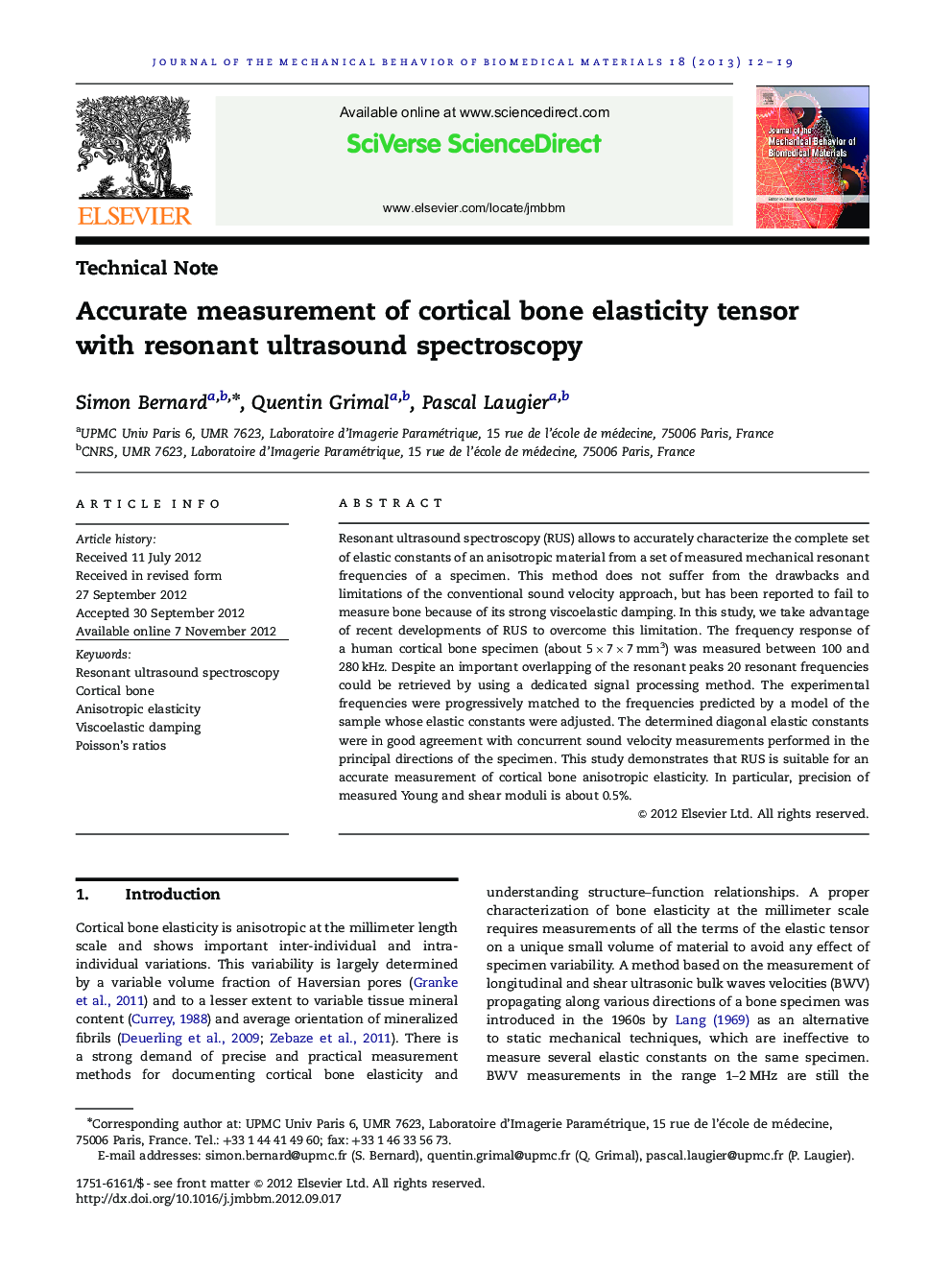| کد مقاله | کد نشریه | سال انتشار | مقاله انگلیسی | نسخه تمام متن |
|---|---|---|---|---|
| 811018 | 1469127 | 2013 | 8 صفحه PDF | دانلود رایگان |

Resonant ultrasound spectroscopy (RUS) allows to accurately characterize the complete set of elastic constants of an anisotropic material from a set of measured mechanical resonant frequencies of a specimen. This method does not suffer from the drawbacks and limitations of the conventional sound velocity approach, but has been reported to fail to measure bone because of its strong viscoelastic damping. In this study, we take advantage of recent developments of RUS to overcome this limitation. The frequency response of a human cortical bone specimen (about 5×7×7 mm3) was measured between 100 and 280 kHz. Despite an important overlapping of the resonant peaks 20 resonant frequencies could be retrieved by using a dedicated signal processing method. The experimental frequencies were progressively matched to the frequencies predicted by a model of the sample whose elastic constants were adjusted. The determined diagonal elastic constants were in good agreement with concurrent sound velocity measurements performed in the principal directions of the specimen. This study demonstrates that RUS is suitable for an accurate measurement of cortical bone anisotropic elasticity. In particular, precision of measured Young and shear moduli is about 0.5%.
Figure optionsDownload high-quality image (180 K)Download as PowerPoint slideHighlights
► Resonant ultrasound spectroscopy successfully measures stiffness of various materials.
► Application to bone is hindered by strong damping of vibrations.
► An optimization of the method enables the measurement of bone anisotropic elasticity.
► Precision of measured bone Young and shear moduli is about 0.5%.
Journal: Journal of the Mechanical Behavior of Biomedical Materials - Volume 18, February 2013, Pages 12–19